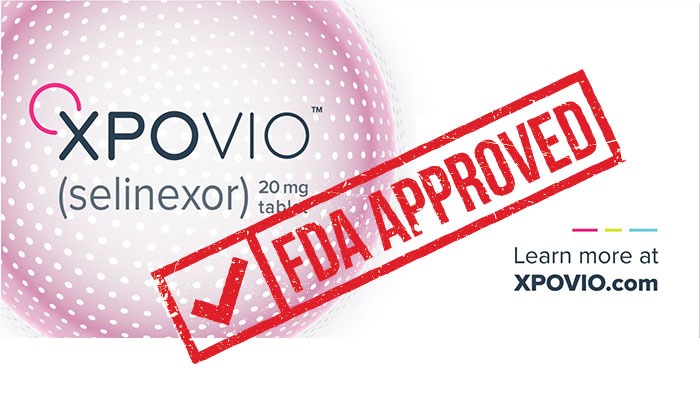The U.S. Food and Drug Administration (FDA) has approved XPOVIO® (selinexor) an oral Selective Inhibitor of Nuclear Export (SINE) medicine, in combination with bortezomib and dexamethasone for the treatment of adult patients with multiple myeloma who have received at least one prior therapy.
XPOVIO was previously approved under the FDA’s Accelerated Approval Program for the treatment of adult patients with relapsed or refractory multiple myeloma who have received at least four prior therapies and whose disease is refractory to at least two proteasome inhibitors, at least two immunomodulatory agents, and an anti-CD38 monoclonal antibody.
The FDA approval of XPOVIO’s expanded indication is supported by the results of the BOSTON study, a multi-center, Phase 3, randomized study (NCT03110562), which evaluated 402 adult patients with relapsed or refractory multiple myeloma who had received one to three prior lines of therapy. The full results from the BOSTON study were recently published in The Lancet and can be found here.
Results from the BOSTON Study
The primary endpoint of the study was progression-free survival (PFS) and key secondary endpoints included overall response rate (ORR), rate of peripheral neuropathy, and others.
The median PFS in the SVd arm was 13.9 months compared to 9.5 months in the Vd arm, representing a 4.4 month (47%) increase in median PFS (hazard ratio of 0.70; p=0.0075). The SVd arm also demonstrated a significantly greater ORR compared to the Vd arm (76.4% vs. 62.3%, p=0.0012). Importantly, SVd therapy compared to Vd therapy showed consistent PFS benefit and higher ORR across several important subgroups.
In addition, the following results favored SVd therapy as compared to Vd therapy:
- SVd therapy demonstrated a significantly higher rate of deep responses, defined as ≥ Very Good Partial Response compared to Vd therapy (44.6% vs. 32.4%) as well as a longer median duration of response (20.3 months vs. 12.9 months). Additionally, 17% of patients on the SVd arm achieved a Complete Response or a Stringent Complete Response as compared to 10% of patients receiving Vd therapy. All responses were confirmed by an IRC.
- Peripheral neuropathy (PN) rates were significantly lower on SVd compared to Vd (32% vs. 47%). In addition, PN rates ≥ Grade 2 were also significantly lower in the SVd arm compared to the Vd arm (21% vs. 34%).
Selinexor Adverse Events
The most common adverse reactions were cytopenias, along with gastrointestinal and constitutional symptoms and were consistent with those previously reported from other selinexor studies. Most adverse reactions were manageable with dose modifications and/or standard supportive care. The most common non-hematologic adverse reactions were fatigue (59%), nausea (50%), decreased appetite (35%), and diarrhea (32%) and were mostly Grade 1 and 2 events. The most common Grade 3 and 4 adverse reactions were thrombocytopenia (43%), lymphopenia (38%), fatigue (28%) and anemia (17%).
